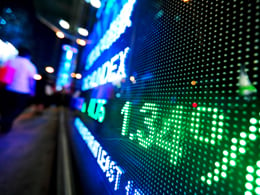 In thinking about the ongoing U.S. market correction, it occurred to me that, in one respect at least, it really is different this time. Historically, when we have experienced a correction—and, remember, we haven’t had one for years—it was either due to systemic factors or to events here in the U.S. That is not the case today.
In thinking about the ongoing U.S. market correction, it occurred to me that, in one respect at least, it really is different this time. Historically, when we have experienced a correction—and, remember, we haven’t had one for years—it was either due to systemic factors or to events here in the U.S. That is not the case today.
When you consider all of the points I have made as to why the decline should not be too extended—the continued strong economic performance here in the U.S., the Fed’s continued stimulative policy, low oil prices, better-than-expected corporate earnings—you could be excused for being surprised that a correction happened at all. So why did it?
China sneezed and the world caught cold
For perhaps the first time in history, a U.S. market correction has been caused principally by problems in one other market: China. Sure, we’ve been hit by systemic problems that originated abroad before—multiple times, in fact—but this is the first time we can point to a single country as the source.
Think about it. It used to be that when the U.S. sneezed, the world caught cold. No other country had that kind of systemic influence. This time, though, the U.S. is in pretty good health, yet when China sneezed, we still caught cold, along with the rest of the world. China now has, in a largely negative way, the same kind of systemic influence that the U.S. has. It may even have more.
What are the implications of China’s growing influence?
This situation raises some new concerns:
- While historically we could rely on a U.S. recovery to pull global markets back up, that recovery may be slower to occur this time.
- The downward pull is now outside U.S. control. The Fed can affect the U.S. economy, but it can’t do anything about the Chinese economy. World markets are now bound to Chinese financial policy, as well as to that of the U.S.
This new influence comes from the fact that China, not the U.S., has provided the majority of global growth during the ongoing recovery from the 2008 financial crisis. It’s the first time the U.S. has not filled that role. From a growth perspective, China has been number one and the U.S. number two. This is unlikely to continue for an extended time, but for the moment, markets are much more influenced by China.
Where does this leave world markets?
Potentially in trouble. With the Chinese economy far from stabilized, and the knock-on effects from its currency devaluation continuing to echo through emerging markets, China is a long way away from restoring its own growth, much less world confidence in its policy. For global confidence to come back, China has to restart growth and regain confidence in its own economy. Both are difficult, but the second may be more so.
Here in the U.S., for the reasons above, we are well positioned to ride this out, but we’re also unlikely to emerge unscathed. We will certainly regain influence over time, if Chinese growth continues to slow and U.S. growth accelerates, but China isn’t likely to lose the influence it has gained anytime soon. Just as the perceived security of Chinese growth has arguably helped keep markets smooth over the past several years, a lack of that perceived stability will probably make markets even more volatile going forward.
In this case, at least, it really does appear that the U.S. market correction is different this time—all because of the role China now plays in the world markets.


 Print
Print


